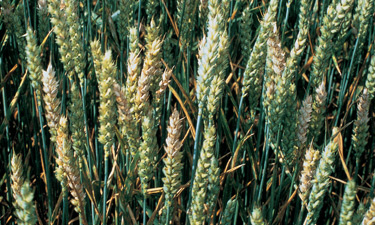The wet start to June looks set to continue with an area of low pressure likely to move in from the continent this weekend. Although its path is uncertain it is expected to bring humid air to much of the UK with the risk of further showers and storms.
Until a few weeks ago the Fusarium risk wasn’t considered significant but in some areas rain at the end of May was sufficient to trigger perithecia development. Ultimate risk is determined by wet weather around flowering and both F. culmorum and F. graminearum produce conidia which can be spread by rain splash. “Wet weather at flowering is the key driver for Fusarium infection and the more frequent the showers the higher the risk,” says Fera’s Phil Jennings.
But even if further showers or storms don’t materialise the risk is still there. F. graminearum produce wind borne ascospores and humid conditions prolong leaf wetness. “F. culmorum is only spread by rain splash but F. graminearum can continue to cycle with heavy dew.”
He also has concerns with Microdochium which has flourished in recent seasons. He says growers shouldn’t just base T3 decisions on F. graminearum and F. culmorum. “Fortunately it isn’t a toxin producer and yield losses are rarely as damaging as F graminearum and F culmorum, yield losses typically being in the order of 10%.
“Symptoms are restricted to an individual spikelet rather than the whole ear which is why yield losses are lower. It is a species that favours warm, dry spring weather which results in inoculum developing at the plant base. What growers need to remember is that whilst a number of actives may offer some protection against F graminearum and F culmorum they have no effect against Microdochium. It is why prothioconazole is a good base for T3 sprays.”
It is what Kent based Crop Management Partner agronomist Tristan Gibbs feared – a change in the weather forecast. “The settled forecast has turned to more showery conditions, which is why I always plan for a T3 as with our weather anything is possible. Like other disease applications timing is important as with Fusarium control is best when in a preventative situation.”
Bayer’s Nick Lewis agrees and also raises a concern with late foliar development. Although Septoria has largely been curtailed to the lower leaves he says the risk has escalated rapidly in the past. “We’ve seen late Septoria infections over a number of seasons. Crops have looked clean after GS39 but only for Septoria to reignite when favourable conditions arise. Our latent Septoria research has shown that green looking leaves may have Septoria bubbling away inside.
“For Fusarium, Proline (prothioconazole) remains our strongest option but it is also our most active Septoria azole. Why we like to see prothioconazole rates maintained in T3 mixtures is that any reduction not only reduces Fusarium activity but foliar too,” he concludes.




